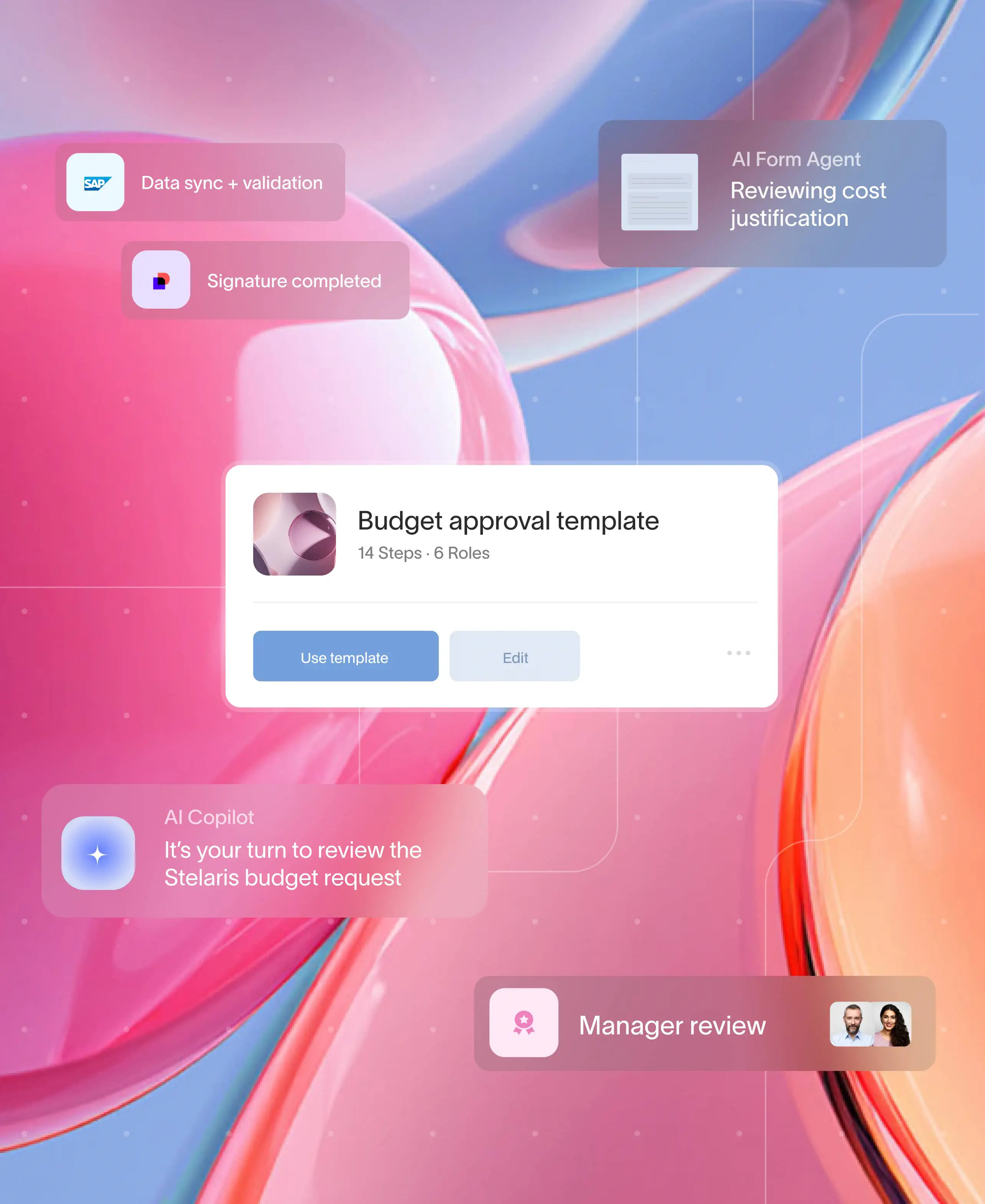
At a glance
Secure, automated client portals help organizations slash onboarding headaches and deliver a seamless first impression; some report process times cut by half. Client portals protect against phishing, data breaches, unauthorized file access, and human error by enforcing strong encryption, granular permissions, and full audit trails.
Modern portals log every document action and approval, creating a transparent audit trail that simplifies compliance and flags suspicious activity. Encryption and passwordless access drive higher client engagement and retention, making privacy a selling point instead of an obstacle.
Why client portal security can't wait
How many times have you received a "confidential" document by email, with the password in the next message? In an era where one mistake can spark a headline, the true cost is trust, and market share.
Client portals have evolved: no longer digital filing cabinets, they're trust engines. Yet, too many businesses rely on sticky notes for passwords and "fire drill" audits. These shortcuts don't save you, they create risk.
Building trust is a growth driver. According to McKinsey, organizations that lead in digital trust are 1.6 times more likely than the global average to achieve at least 10% annual revenue and EBIT growth. These "digital trust leaders" don't just prevent breaches, they outperform competitors by making privacy and transparency core to every digital interaction.
Investing in robust client portal security isn't just about risk management. With data breaches surging 235% globally and 78% of breaches now involving unauthorized access through stolen credentials, organizations face unprecedented exposure and the business impact is devastating. For SMBs alone, the average breach costs between $120,000 and $1.24 million, enough to force many out of business.
Client portals that enforce strong encryption, credential controls, and auditability are no longer a luxury, they are essential for survival, trust, and compliance in today's evolving risk landscape. It's a strategic move to win and retain customers, grow your brand, and set your business up for long-term success.
This will unpack the playbook for making "client portal security" your brand's strongest asset.
What features matter most for client portal security?
Is your client portal genuinely secure, or just convenient? A secure client portal isn't about ticking boxes, it's about bulletproofing your workflows. Here are the essential features that form the foundation of truly secure client portals:
Encryption, everywhere: Implement AES-256 for data at rest and TLS/SSL for data in transit. If it's not encrypted, it's not secure.
Multi-factor & role-based access: MFA stops credential hacks, granular roles keep the right eyes on the right data.
Comprehensive audit logs: Every login, view, share, or change is time-stamped for compliance frameworks like SOC 2, HIPAA, and ISO 27001.
Zero-trust architecture: Don't trust, always verify each device, user, and action is checked automatically.
Disaster recovery planning: Backups, rapid restores, and business continuity are must-haves, not insurance policies.
User-friendly interface: Clients must find it easy to sign in, view, and interact with documents and messages. Frictionless adoption is a core security principle.
Advanced features worth considering
Passwordless authentication: Leading client portals put passwordless security at the core. With features like magic links and Single Sign-On (SSO), users access the portal without ever setting or remembering passwords, dramatically reducing phishing risk and support headaches.
Custom workflow automation: With Moxo's drag-and-drop workflow builder, you automate each key security and compliance step including files, approvals, document requests, and deadline handoffs, so nothing slips through the cracks.
Consent management & self-service data rights: Users can access, review, and manage their data or privacy settings from within the portal, helping you meet other regulations.
How do leading client portals ensure compliance?
A secure client portal isn't just about encryption and audit trails, it's about empowering clients with transparency and control over their personal data from day one.
Understanding your regulatory requirements
Modern businesses must navigate an increasingly complex regulatory landscape. GDPR, CCPA/CPRA, India's new DPDPA, and US state laws require portals that can automate consent, handle data subject requests, and enforce breach notifications. Industry-specific frameworks like HIPAA for healthcare, SOC 2 for service organizations, and ISO 27001 for information security management demand specialized compliance features in finance, law, and real estate.
The key to successful compliance is building systems that maintain always-on readiness. Real-time monitoring and automated audit logs mean you're ready for an audit any day of the year, transforming compliance from a reactive scramble into a proactive advantage.
What are the best practices for airtight client portal security?
Organizations most often struggle with phishing scams, targeted credential theft, data breaches, account takeovers, and accidental data leaks, each of which can compromise client trust and business continuity.
The most sensitive areas to lock down
Pay special attention to these high-risk zones that represent the greatest potential for security breaches:
Client onboarding processes: Identity verification and initial account setup create critical vulnerability windows.
Document sharing & uploads: Contracts, IDs, and personally identifiable information require the highest levels of protection.
E-signature and approval workflows: Digital signature processes must maintain legal validity while ensuring security.
User authentication systems: Password management, MFA enrollment, and account recovery processes need robust security measures.
Integrated payments and financial data: Any financial transactions or sensitive financial information demands bank-level security protocols.
Protecting your portal from day one
Map your risks first: Run a comprehensive risk assessment for every workflow, don't rely on "hope security" strategies.
Privacy by design philosophy: Security should be foundational, integrated into architecture and daily operations rather than added as an afterthought.
Continuous education programs: Your greatest risk is still human error. Train staff and clients on phishing recognition, password hygiene, and secure portal usage.
Automated patching and monitoring: Today's threats evolve rapidly, so your defenses must evolve just as quickly with automated updates and real-time threat detection.
Vendor and integration reviews: Every new plugin or integration creates a new threat surface that requires regular security audits and assessments.
Moxo in focus: Secure client portal security at work
Real organizations are seeing transformative results when they implement comprehensive client portal security solutions. These case studies demonstrate the tangible business impact of prioritizing security and compliance.
Veon Szu Law: Achieved 80% faster workflows by moving to a centralized, encrypted portal. Secure e-signatures streamlined client trust and compliance processes, eliminating delays and reducing administrative overhead.
Savills Commercial Real Estate: Closed contracts 40% faster after shifting to an encrypted portal where every document step is tracked and auditable, significantly reducing compliance risks while accelerating deal completion.
BNP Paribas: Centralized messaging, document sharing, and digital signatures through a secure portal, cutting onboarding time by 50% while enabling full KYC compliance and comprehensive audit capabilities.
Falconi Consulting: Reduced project turnaround by 40% with automated approval logging that ensures every decision is auditable and nothing gets lost in email chains.

How Moxo delivers comprehensive security
Moxo provides enterprise-grade security through multiple integrated layers that work together to create an impenetrable client portal environment.
Granular permissions and audit trails: Every user action is tracked and controlled, ensuring only authorized personnel can access specific information types and functions.
End-to-end encryption: AES-256 and TLS/SSL encryption protect data both at rest and in transit, meeting the highest security standards used by financial institutions and government agencies.
Customizable access controls and branding: Organizations can maintain their brand identity while implementing sophisticated security measures that build client trust and confidence.
Built-in compliance frameworks: SOC 2 and GDPR compliance capabilities are included out of the box, ensuring Moxo grows seamlessly with evolving regulatory requirements.
Live collaboration tools: Clients and teams can collaborate on documents, engage in secure chat, and collect e-signatures all within one auditable environment. This eliminates scattered communications and lost contracts while maintaining complete security and traceability.
Branded client experience: Security doesn't mean sacrificing user experience. Organizations can customize every aspect of their portal, from logos to login pages, ensuring clients always experience consistent branding at every touchpoint.
Seamless system integrations: Compliance extends beyond the portal itself. Moxo's integrations connect securely to existing CRM and document management systems, ensuring data and approvals flow throughout the organization while maintaining security protocols.
Real-time dashboards and comprehensive audit logs: Complete visibility into every workflow step comes standard, with timestamped logs and analytics for tracking approvals, client onboarding, and compliance status. Bottlenecks are identified instantly, making audits efficient and painless.
Results and security that pays off
The business impact of implementing robust client portal security extends far beyond risk mitigation. Organizations consistently report measurable improvements across multiple operational areas.
Modern secure portals deliver 60% fewer manual follow-ups through automated reminders and client-side notifications that streamline workflows without compromising security. Onboarding processes become 40% faster when encryption and real-time logging work together to drive both speed and compliance simultaneously.
Legal and approval workflows see particularly dramatic improvements, with 80% less delay when audit trails and direct client access eliminate bottlenecks while reducing risk exposure. These improvements compound over time, creating sustainable competitive advantages that extend well beyond security benefits.
Conclusion
Today's client expectations and regulatory demands mean security can't be an afterthought. By choosing a modern, privacy-first client portal, you transform compliance from a burden into a competitive advantage, protecting your business, your clients, and your reputation from the most costly threats.
Ready to see client portal security done right? Don't leave clients exposed with outdated practices. Upgrade to a privacy-first, audit-ready client portal before risks become regrets. See how Moxo secures, automates, and scales compliance for your organization today.
Book a demo and protect your clients and your business, the easy way.
Frequently asked questions
What is Moxo's SOC 2 security and why should I care?
SOC 2 is a widely recognized third-party security standard for protecting customer data. Moxo's SOC 2 compliance means independent security experts have audited our systems to ensure your information is always handled safely, with controls for access, data privacy, and ongoing monitoring. For you, it's proof that Moxo meets strict requirements for security, confidentiality, and reliability, giving you peace of mind that your client data is protected to the highest industry standards.
How does Moxo ensure files and data are secure in the client portal?
Moxo encrypts files at rest and in transit, supports multi-factor authentication, and provides role-based permissions so only authorized users can access sensitive information. Every action is recorded with a detailed audit log that maintains complete accountability and traceability.
What is AES-256 and why should I ensure my client portal has it?
AES-256 stands for Advanced Encryption Standard with a 256-bit key length. It's one of the strongest encryption methods available and is trusted by governments and banks worldwide to secure sensitive data. Ensuring your client portal uses AES-256 means your files and messages are protected by military-grade encryption at rest and in transit, making unauthorized access virtually impossible.
Can I track and control who accesses documents in the portal?
Yes. Moxo provides granular permissions and a comprehensive audit trail. You can see exactly who viewed, shared, downloaded, or modified every document at any time, creating complete accountability and transparency for all portal activities.
How does Moxo help meet compliance requirements like SOC 2, GDPR, or HIPAA?
Moxo includes built-in compliance features including encrypted data storage and transmission, comprehensive audit trails, consent management systems, automated process logging, and configurable user controls. These features align with key global and industry-specific standards, making compliance management seamless and automatic.
Can Moxo integrate with our CRM or existing business software?
Yes. Moxo offers out-of-the-box integrations with leading CRMs, e-signature platforms, document management systems, and payment processors. This makes it easy to connect with your existing technology stack while keeping all workflows seamless, secure, and fully compliant with your organizational requirements.





